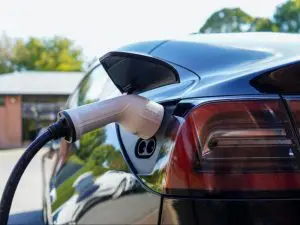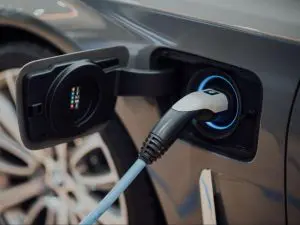Surge protection devices (SPDs) are essential components in safeguarding your electronics and electrical systems from potentially damaging voltage spikes. These spikes, also known as surges, can originate from a variety of sources such as lightning strikes, power outages, or electrical faults. An effective surge protector can absorb and redirect excess energy, preventing it from damaging sensitive devices like computers, televisions, and home appliances.
However, for surge protectors to perform optimally over time, they require regular maintenance and testing. Without proper care, they may fail without warning, leaving your equipment vulnerable. In this guide, we’ll cover the steps you need to take to maintain and test your surge protection devices to ensure they continue to protect your valuable electronics.
Understand How Surge Protectors Work
Before diving into maintenance and testing, it’s important to understand how surge protection devices function. SPDs work by diverting excess electrical current away from your devices when a voltage spike occurs. They are rated by their joule capacity — the higher the joule rating, the more energy they can absorb.
According to our fellow electrician friends at Brennan Electric, most surge protectors contain components like Metal Oxide Varistors (MOVs), which are responsible for absorbing the surge. Over time, these components degrade, which is why regular maintenance and testing are essential to ensuring continued protection.
Monitor Indicator Lights and Alarms
Most modern surge protection devices come with indicator lights or alarms that signal the status of the device. These indicators are typically designed to show if the surge protection is still functioning properly. The light is usually green if the protection is active and turns off or red when the surge protection has worn out.
- Check the indicator lights regularly to ensure the device is still protecting your electronics. If the light turns off or changes color, it may mean that the device is no longer offering protection.
- Pay attention to alarms if your SPD has an audible alert system. If an alarm sounds, it’s a warning that the surge protection has failed or has been compromised.
In either case, you should replace the surge protector or investigate further, as the device may no longer be effective.
Replace Surge Protectors After Major Surges
Surge protectors can degrade or fail after absorbing a large surge, such as one caused by a lightning strike or a significant electrical fault. Even though they are designed to handle voltage spikes, a particularly large surge can exceed the device’s capacity, leaving it unable to protect against future surges.
- Replace your surge protector after it has absorbed a major surge. Although it might still provide power to connected devices, it may no longer offer protection from future spikes.
- Keep track of surge events if possible. Some advanced surge protectors have counters or logs that record the number of surges they have encountered. If your SPD has this feature, monitor the number of spikes over time and replace the unit once it reaches its capacity.
Test the Surge Protector’s Functionality
Although surge protectors don’t typically come with built-in self-testing mechanisms, there are ways to test them to ensure they are still working as intended.
Visual Inspection
- Look for any physical signs of damage, such as burn marks, melted plastic, or unusual discoloration. These can indicate that the device has experienced a large surge and might be compromised.
- Check the power cord for any visible fraying or damage, which could affect its functionality.
Multimeter Test
If you are comfortable using electrical testing tools, a multimeter can help determine if the surge protector is still working properly:
- Set your multimeter to test for continuity. This will allow you to check if electricity is still flowing properly through the surge protector.
- Unplug the surge protector from the wall outlet and remove all connected devices.
- Test the outlets on the surge protector by placing the multimeter probes in each slot. A reading indicating continuity means that the outlets are still functioning properly.
While this test can confirm the device is delivering power, it won’t tell you if the surge protection mechanism itself is still functional. If you’re unsure, replacing the device after a few years or following a large surge is a good preventive measure.
Keep the Surge Protector Clean
Dust, dirt, and moisture can negatively affect the performance of surge protection devices. Regularly cleaning your surge protector will ensure it operates efficiently and reduces the risk of damage due to environmental factors.
- Unplug the surge protector from the wall before cleaning it.
- Wipe the surface with a dry or slightly damp cloth to remove dust and debris. Avoid using any cleaning products directly on the device as these may damage the internal components.
- Keep it away from moisture, as water can corrode internal components and reduce its effectiveness. Avoid placing surge protectors in humid areas or near windows where rain or condensation could reach them.
Ensure Proper Grounding
One of the most important factors in the functionality of surge protectors is proper grounding. Without a grounded outlet, the surge protector cannot effectively redirect excess voltage away from your devices.
- Verify that your outlet is grounded. You can use a simple outlet tester from a hardware store to check if the outlet is properly grounded.
- Ensure that the surge protector itself is grounded by plugging it into the grounded outlet. Surge protectors with three prongs require a grounded outlet to function correctly. If the outlet is not grounded, it’s essential to either rewire the outlet or use a proper adapter.
Regularly Replace Surge Protection Devices
Surge protectors do not last forever. Even if your device hasn’t encountered any major surges, the internal components degrade over time, reducing its capacity to protect against voltage spikes.
- Replace surge protectors every 2 to 3 years, or sooner if you live in an area prone to frequent storms and power surges. Over time, the MOVs inside the device lose their ability to absorb excess energy.
- Consider surge protectors with warranties or performance guarantees. Some high-end models offer lifetime warranties or coverage for any damage caused to your devices if the surge protector fails.
Use Whole-Home Surge Protection
While individual surge protectors are an essential line of defense, installing a whole-home surge protection system offers an added layer of security. These systems are installed at your main electrical panel and protect all of the electrical devices in your home from voltage spikes.
- Hire a licensed electrician to install whole-home surge protection. This system works in conjunction with individual SPDs to prevent large surges from damaging electronics before they even reach outlets.
- Combine whole-home surge protection with plug-in surge protectors for maximum safety. This dual approach provides layered protection against both large surges from external sources and smaller internal surges caused by appliances like refrigerators or HVAC systems.
Final Thoughts
Maintaining and testing your surge protection devices is crucial to ensuring they continue to function optimally. By regularly checking the status of your surge protectors, cleaning them, replacing them after major surges, and ensuring proper grounding, you can protect your electronics and electrical systems from potentially costly damage. Incorporating these steps into your routine home maintenance will give you peace of mind and keep your devices safe from sudden power spikes.



